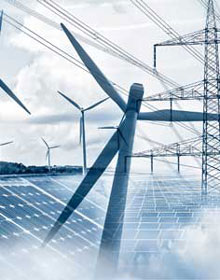
In a significant move to address its ongoing energy crisis, South Africa has successfully added 800 megawatts (MW) of new capacity to its national grid. This development marks a crucial step in alleviating the country's persistent power shortages, which have frequently resulted in rolling blackouts and economic disruptions. However, the question remains whether this boost will serve as a short-term relief or a sustainable long-term solution.
South Africa's energy challenges have been well-documented, with the state-owned utility company, Eskom, struggling to meet the country's electricity demands. Aging infrastructure, maintenance backlogs, and financial constraints have plagued the utility, leading to frequent load shedding. These power outages have not only hindered economic growth but also affected everyday life for millions of South Africans.
The addition of 800MW is part of South Africa's broader strategy to stabilize its energy supply. This capacity increase comes from a mix of renewable energy projects and traditional power plants. The government's integrated resource plan aims to diversify the energy mix, incorporating more renewable sources such as solar and wind, while still relying on coal and gas for baseload power.
In the immediate term, the new capacity is expected to provide much-needed relief to South Africa's embattled electricity grid. The additional power will help reduce the frequency and severity of load shedding, providing a more stable electricity supply to consumers and businesses. This is especially crucial for industries that depend heavily on consistent power, such as manufacturing and mining, which are significant contributors to the national economy.
Furthermore, this increase in capacity is likely to boost investor confidence, as a more reliable power supply is a critical factor for attracting foreign direct investment. In the short run, this development is a positive step towards mitigating the country's energy crisis and providing breathing room for long-term energy planning.

While the immediate impact of the 800MW addition is positive, experts caution that it is not a panacea for South Africa's energy woes. The country's electricity demand continues to grow, driven by population growth and economic development. To ensure a sustainable energy future, South Africa must implement comprehensive reforms and investments in energy infrastructure.
One of the key long-term strategies is to increase the share of renewable energy in the national grid. The government has set ambitious targets for renewable energy, aiming for it to contribute significantly to the energy mix by 2030. However, achieving these goals requires substantial investment, technological advancements, and policy support.
Moreover, there is a need to address the challenges faced by Eskom, including its financial instability and operational inefficiencies. Reforms in the utility sector, coupled with private sector participation, could drive efficiency and innovation, ultimately leading to a more resilient energy system.
Recognizing the complexity of the energy crisis, the South African government has engaged with various stakeholders, including international partners, to explore sustainable energy solutions. Public-private partnerships are being encouraged to leverage expertise, technology, and investment in the energy sector.
In addition, there is a growing emphasis on energy conservation and efficiency. Initiatives to promote energy-saving practices among consumers and businesses are being rolled out to reduce overall demand and ease the pressure on the grid.
The addition of 800MW to South Africa's national grid is undoubtedly a significant milestone in addressing the country's energy challenges. While it offers immediate relief and bolsters economic stability, it is only a piece of the larger puzzle. For a sustainable energy future, South Africa must continue to diversify its energy sources, implement systemic reforms, and foster a conducive environment for innovation and investment.
In conclusion, the path to a long-term solution requires a multi-faceted approach, balancing short-term needs with long-term strategic planning. By doing so, South Africa can overcome its energy crisis and pave the way for a resilient and sustainable energy future.


Leave a Comment